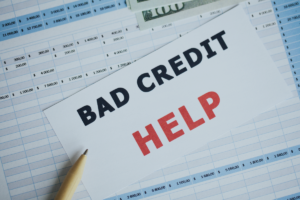Table of Contents
ToggleCPN tradelines
The Truth About CPN Tradelines, or Credit Privacy Numbers
Most all CPN Tradelines are $450!
We have CPN Tradelines up to $90K & 30 years old with all positive payment history and low utilization.
We can no longer provide a live list since the lines go so quick.
To request availability now on current CPN Tradelines you can text the Tradeline Department 24/7/365 direct at:
(718) 673-6458
MONEY BACK GUARANTEE!
This may sound unbelievable, but our CPN tradelines actually post. Imagine that – a company that actually delivers on its promises. Pretty cool, right? 😄
IMPORTANT NOTE: Always know that if you live in the UNITED STATES you are entitled to a Legal New Credit File Via the 1974 Privacy Act which can give you double the borrowing power while your original FICO Credit File can go in for repairs. Add CPN Tradelines to further boost your score HERE.
(800) 597-2560
Call For CPN Tradelines
In this article:
If you’re struggling with poor credit scores, you know they can pose plenty of  challenges. A poor credit score can keep you from getting approved for a credit card or a car loan. It can make renting an apartment difficult. So when you see an ad promising to help you start over with a new credit history by getting a CPN, it may seem like the answer to your prayers. But is it?
challenges. A poor credit score can keep you from getting approved for a credit card or a car loan. It can make renting an apartment difficult. So when you see an ad promising to help you start over with a new credit history by getting a CPN, it may seem like the answer to your prayers. But is it?
A CPN, or credit privacy number, is a nine-digit number that’s formatted just like a Social Security number (SSN). It may also be called a credit profile number or credit protection number.
CPNs are a way to use new/aged credit history while you fix a bad credit history or bankruptcy. You can use the CPN instead of your SSN to apply for credit with your new credit identity. Add CPN Tradelines to further boost your score HERE.
Does this seem too good to be true?
Do CPNs Really Help With Bad Credit?
CPN’s do not replace your SSN, CPNs are legitimate. For example, CPN numbers can be fully tri-merged and registered with the Social Security Administration if you need that extra insurance.
When you’re eager to repair your credit it’s easy to start a new CPN file while your SSN credit can be in for repairs which can take 2-3 times longer than getting new/aged credit file with a legal new credit file. Register free HERE
How Are CPNs & CPN Tradelines Different From ITINs and Social Security Numbers?
The Internal Revenue Service (IRS) uses taxpayer identification numbers in administering tax laws. SSNs and Individual Taxpayer Identification Numbers (ITINs) are two types of taxpayer ID numbers. SSNs are issued by the Social Security Administration; they’re what most people use when filing taxes.
ITINs are issued by the IRS under special circumstances for some non-resident and resident aliens, their spouses and dependents who can’t get SSNs. An ITIN is formatted like an SSN, with nine digits and dashes; the difference is that all ITINs begin with the number nine.
CPNs are nine-digit numbers that resemble SSNs and ITINs.
What About Getting a New SSN?
When poor credit is costing you money or opportunities, it’s natural to wish you could start all over again. However, getting a new SSN isn’t the answer. The IRS can issue a new SSN only if:
- Sequential SSNs assigned to members of the same family are causing problems.
- More than one person is assigned or is using the same SSN.
- A victim of identity theft is having ongoing issues as a result of using their original SSN.
- Someone is being harassed, abused or their life is in danger.
- You have religious or cultural objections to numbers or digits in your original SSN.
Even in these extreme situations, getting a new SSN isn’t easy. You’ll have to prove there’s a good reason for the change by providing all the documentation the Social Security Administration asks for and getting others (like the police or your church or temple) to support your request.
More to the point, getting a new SSN doesn’t mean you can leave the old one behind. To make sure you get credit for all your earnings and receive the right amount of Social Security payments when you retire, the Social Security Administration will cross-reference your new SSN with your original SSN. No matter what you do, you and your original SSN are permanently linked.
How to Build Your New Credit the Right Way
You can instantly transition away from your bad credit by purchasing a CPN Package HERE
Here’s how:
- Register for free on our website.
- For your original SSN Credit & your Legal New CPN File do the following: Reduce your credit utilization ratio. This ratio shows how much of your available credit you’re using and is second only to payment history in credit score calculations. To keep your credit scores in good shape, you should use no more than 30% of your available credit, but for the best scores, think single digits. Learn more about how your credit utilization ratio is calculated and how to improve it.
- Delay applying for credit. When you apply for a loan, credit card or another type of revolving credit, the lender will ask one or more of the credit bureaus for your credit file, which causes a hard inquiry on your credit report. Hard inquiries cause a dip in your credit score. Although the dip usually lasts only a few months, applying for several credit cards or loans at the same time may suggest to credit scoring models such as FICO that you’re in financial trouble, which can hurt your credit score.
- TIP: When applying for credit only do “pre-authorization” credit applications so there isn’t a hard inquiry.
- Keep old credit accounts open. If credit cards burn a hole in your pocket, closing the account after you pay one off may seem like a smart way to remove temptation. But doing so also reduces your total available credit, typically increasing your credit utilization ratio. Keeping older accounts open also shows that you’ve had credit for a long time, which helps your credit score. Even if you don’t plan to use them, consider keeping older credit accounts open.
- Try using Experian Boost. Experian Boost helps you get credit for your on-time utility and telecom payments by adding positive payment information to your credit report. In many cases, this results in a boost to your FICO® Score☉ .
Get Started Today!
IMPORTANT NOTE: Always know that if you live in the UNITED STATES you are entitled to a Legal New Credit File Via the 1974 Privacy Act which can give you double the borrowing power while your original FICO Credit File can go in for repairs.
Call NOW!
(800) 597-2560
CPN Tradelines

For many years our specialists have created strategies for a clients credit growth depending on their given circumstances. Ask about connecting your new CPN Number to a New Business as the Personal Guarantor to triple your available credit potential.
Legal New Credit File
The legal team at TMMinistry of Civil Affairs© PMA A/K/A LNCF Stands as a beacon of hope for the traditional consumer. Comprising a dynamic association of members who operate as Attorneys-in-Fact for our PMA registered members, each brings a unique blend of expertise, passion, and dedication to the table.
With backgrounds in corporate law, civil rights, and criminal defense, they offer comprehensive legal services that cater to everyday people. Their mission is to provide legal clarity about consumer privacy while upholding the values of integrity, transparency, and client-focused service.
Since its inception, LNCF has made significant strides in the legal community, earning trust for their innovative approach to complex contract challenges in the privacy space.
The team’s collaborative spirit is the cornerstone of their success, allowing them to leverage their individual strengths in a unified strategy. Whether navigating high-stakes client transitions or offering in-depth consulting services, they remain committed to making a positive impact in the lives of their clients and the broader American community.









